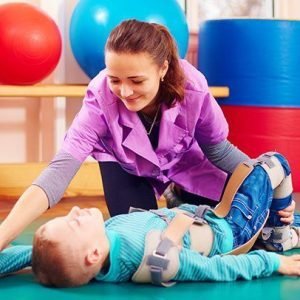
What is Cerebral Palsy?
Cerebral palsy (CP) is a group of permanent movement disorders that appear in early childhood. It is caused by abnormal development or damage to the parts of the brain that control movement, balance, and posture. Symptoms vary widely and can include muscle stiffness or floppiness, poor coordination, tremors, involuntary movements, and difficulties with speech and swallowing. The severity of CP ranges from mild to severe, and it may affect only one side of the body or the entire body.
What is the main causes of cerebral palsy?
Cerebral palsy is usually caused by a problem that affects the development of a baby’s brain while it’s growing in the womb. These include: damage to part of the brain called white matter, possibly as a result of a reduced blood or oxygen supply – this is known as periventricular leukomalacia (PVL).
How is cerebral palsy treated?
Common treatments include medicines; surgery; braces; and physical, occupational, and speech therapy. No single treatment is the best one for all children with CP. Before deciding on a treatment plan, it is important to talk with the child’s doctor to understand all the risks and benefits.
- Abnormal movements (twisting, jerking, or writhing) of the hands, feet, arms, or legs while awake, which gets worse during periods of stress.
- Tremors.
- Unsteady gait.
- Loss of coordination.
- Floppy muscles, especially at rest, and joints that move around too much.
Skip The Waiting Room!
Register Online Before You Arrive.
We have up to date schedules, contact information, & let you book appointments online.


